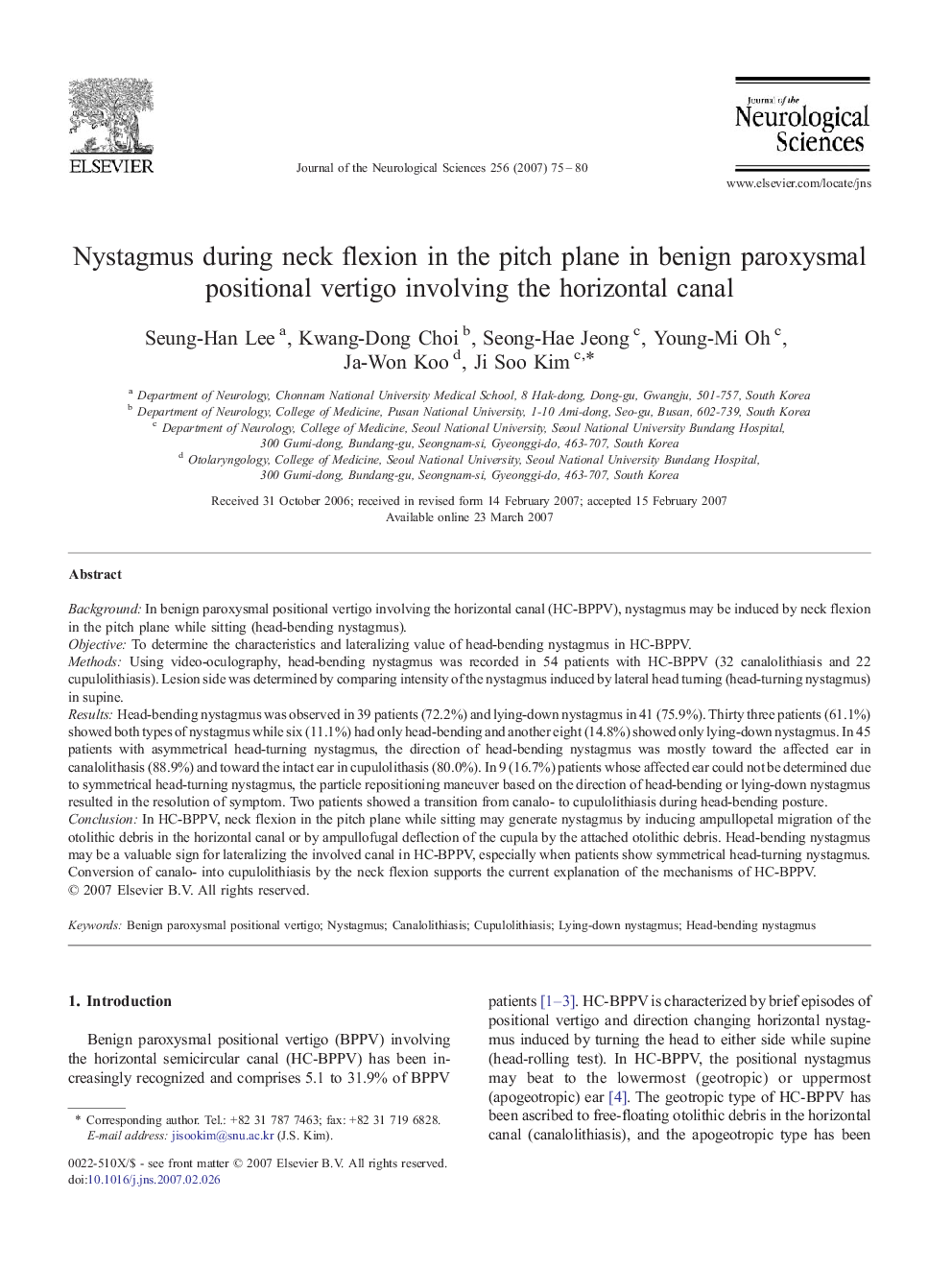| کد مقاله | کد نشریه | سال انتشار | مقاله انگلیسی | نسخه تمام متن |
|---|---|---|---|---|
| 1916418 | 1535206 | 2007 | 6 صفحه PDF | دانلود رایگان |

BackgroundIn benign paroxysmal positional vertigo involving the horizontal canal (HC-BPPV), nystagmus may be induced by neck flexion in the pitch plane while sitting (head-bending nystagmus).ObjectiveTo determine the characteristics and lateralizing value of head-bending nystagmus in HC-BPPV.MethodsUsing video-oculography, head-bending nystagmus was recorded in 54 patients with HC-BPPV (32 canalolithiasis and 22 cupulolithiasis). Lesion side was determined by comparing intensity of the nystagmus induced by lateral head turning (head-turning nystagmus) in supine.ResultsHead-bending nystagmus was observed in 39 patients (72.2%) and lying-down nystagmus in 41 (75.9%). Thirty three patients (61.1%) showed both types of nystagmus while six (11.1%) had only head-bending and another eight (14.8%) showed only lying-down nystagmus. In 45 patients with asymmetrical head-turning nystagmus, the direction of head-bending nystagmus was mostly toward the affected ear in canalolithasis (88.9%) and toward the intact ear in cupulolithasis (80.0%). In 9 (16.7%) patients whose affected ear could not be determined due to symmetrical head-turning nystagmus, the particle repositioning maneuver based on the direction of head-bending or lying-down nystagmus resulted in the resolution of symptom. Two patients showed a transition from canalo- to cupulolithiasis during head-bending posture.ConclusionIn HC-BPPV, neck flexion in the pitch plane while sitting may generate nystagmus by inducing ampullopetal migration of the otolithic debris in the horizontal canal or by ampullofugal deflection of the cupula by the attached otolithic debris. Head-bending nystagmus may be a valuable sign for lateralizing the involved canal in HC-BPPV, especially when patients show symmetrical head-turning nystagmus. Conversion of canalo- into cupulolithiasis by the neck flexion supports the current explanation of the mechanisms of HC-BPPV.
Journal: Journal of the Neurological Sciences - Volume 256, Issues 1–2, 15 May 2007, Pages 75–80